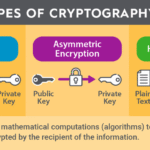When delving into the realm of online security, the prominence of encryption is indefatigable; it serves as a bulwark against the pervasive threats that lurk in cyberspace. At the heart of this intricate web of privacy protections lies Transport Layer Security (TLS), a cryptographic protocol designed to safeguard data as it traverses the ether of the internet. Understanding how TLS employs encryption to ensure data privacy necessitates a journey through its underlying mechanisms, where the interplay of cryptography and communication protocols fosters a secure digital environment.
To fathom the power of TLS, one must first grasp the fundamental principle of encryption. At its core, encryption involves the transformation of plaintext—readable data—into ciphertext, an obfuscated format that renders the information unintelligible to unauthorized entities. This transformation is achieved through an algorithmic process predicated on sophisticated mathematical principles. Central to this process is the utilization of keys, which are paramount in both encrypting and decrypting data.
TLS operates as a multifaceted protocol, incorporating various cryptographic techniques to bolster data confidentiality, integrity, and authenticity. The initial phase in a TLS connection establishment is the handshake process, an intricate choreography of messages exchanged between the client and server. During this handshake, both parties negotiate the encryption algorithms and cryptographic keys to be employed throughout the session. This negotiation is pivotal, as it determines the level of security and the methods by which data will be encrypted and decrypted.
The employment of asymmetric cryptography is a hallmark of the TLS handshake. This involves two distinct keys: a public key and a private key. The public key, as its name suggests, may be freely shared, allowing clients to encrypt messages intended for the server. Conversely, the private key remains confidential, solely in the possession of the server, permitting it to decrypt the incoming messages. This dual-key approach imbues the exchange with a robust layer of security, ensuring that even if the public key is intercepted, the encrypted data remains impervious to prying eyes.
Once the handshake culminates in the establishment of a secure channel, the subsequent data transmission occurs under the protection of symmetric encryption. Herein lies a pivotal shift. Unlike asymmetric encryption, which is computationally intensive, symmetric encryption leverages a single secret key for both encryption and decryption. The efficiency of symmetric encryption allows for rapid processing of data, enabling seamless communication while maintaining stringent security measures.
The transition to symmetric encryption during an active TLS session not only enhances performance but also upholds the confidentiality of the transmitted data. The secret key used in symmetric encryption is derived from the earlier stages of the handshake, ensuring that only participants in the exchange possess the means to decrypt the shared information. Thus, this systematic oscillation between asymmetric and symmetric encryption epitomizes the sagacity of TLS in safeguarding data privacy.
Moreover, the integrity of data is fortified through cryptographic hash functions integrated into the TLS protocol. These hash functions generate a unique digest of the transmitted data, serving as a digital fingerprint that can be verified upon receipt. This ensures that any alteration of the data—be it accidental or malicious—can be detected, thereby affirmatively asserting the authenticity and trustworthiness of the exchanged information.
Inextricably linked to the notions of encryption and integrity is the concept of authentication. The efficacy of TLS in securing communications is predicated upon its ability to ascertain the identity of the parties involved. Digital certificates, issued by trusted certificate authorities, play a crucial role in this authentication paradigm. These certificates validate the legitimacy of the server, enabling clients to verify that they are indeed communicating with the intended entity and not an impostor—a critical aspect in a digital landscape often fraught with deception.
As one delves deeper into the ramifications of TLS encryption, the significance of its ubiquitous application becomes increasingly evident. From securing online transactions to encrypting sensitive communications among businesses and individuals, the implications of TLS are pervasive. It is a cornerstone of modern internet security, responsible for engendering trust and confidentiality in various digital interactions. This trust is exemplified by the familiar “https://” protocol that precedes secure website URLs, serving as an assurance to users that their data is cloaked in a protective shield.
Nevertheless, as with all technologies, TLS is not impervious to vulnerabilities. The evolving nature of cyber threats necessitates a continual reevaluation of encryption standards, prompting the cryptographic community to innovate and enhance existing protocols. Continuous updates and improvements are crucial, ensuring that TLS remains resilient against emerging challenges and adversarial tactics.
In conclusion, the utilization of encryption within the TLS framework exemplifies a sophisticated and layered approach to safeguarding data privacy. Through the intricate interplay of asymmetric and symmetric cryptography, along with rigorous authentication measures, TLS embodies a paradigm shift in the capacity for secure digital communication. As online interactions proliferate in an increasingly digital landscape, the role of TLS in maintaining the sanctity and confidentiality of data cannot be overstated. The promise lies not just in current applications, but also in the continuous evolution of cryptographic practices that ensure a more secure future for global communication.








Leave a Comment